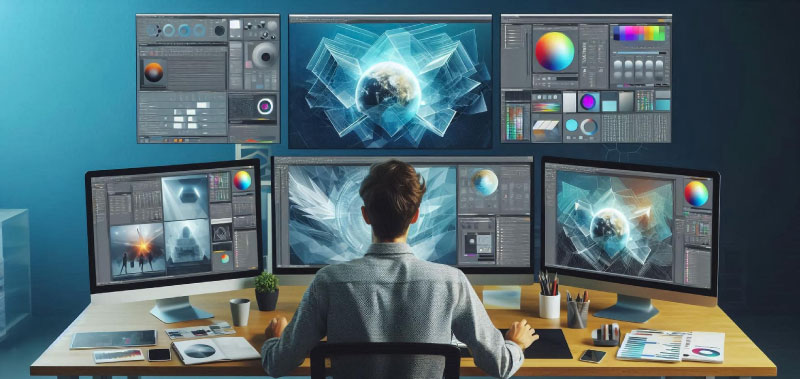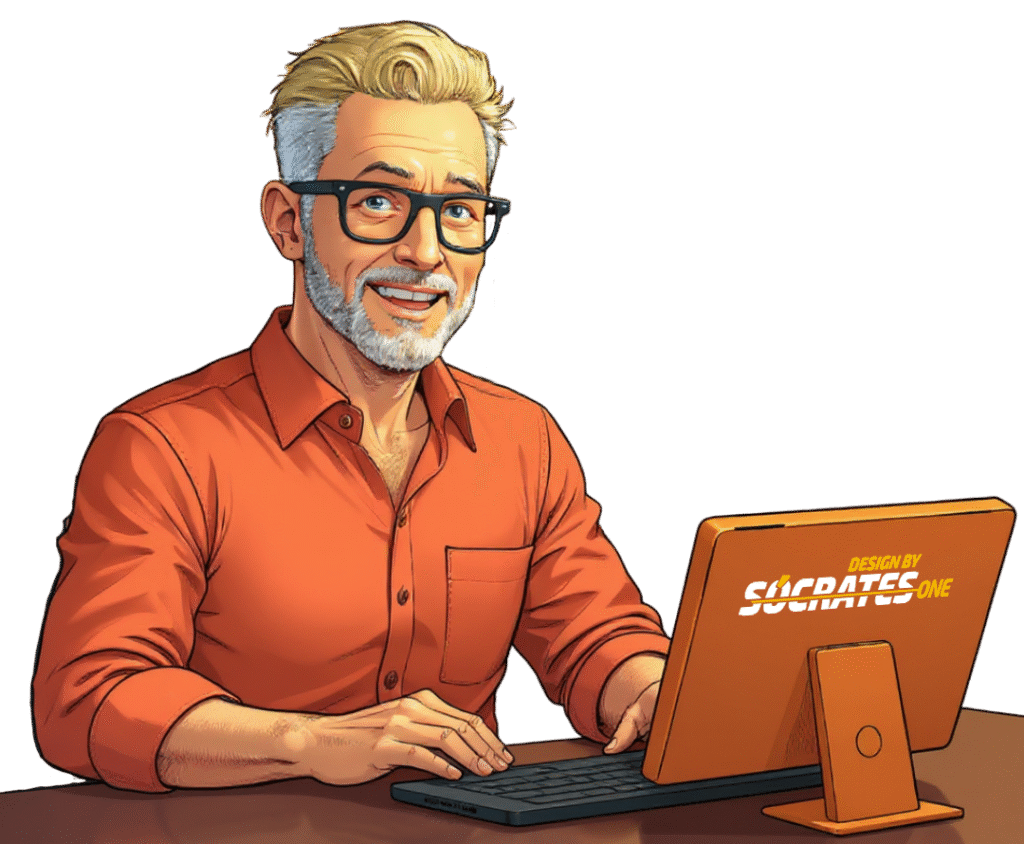![]()
A inteligência artificial (IA) revolucionou uma grande variedade de indústrias, e o design gráfico não é exceção. Hoje em dia, os designers podem aproveitar ferramentas impulsionadas por IA que os ajudam a realizar um trabalho mais eficiente e de maior qualidade, otimizando seus esforços e permitindo uma experiência visual mais refinada para seus clientes. Essa tecnologia não substitui a criatividade, mas complementa, ao reduzir tarefas repetitivas e habilitar novas capacidades.
1. Automação de Tarefas Repetitivas
Um dos benefícios mais diretos da IA no design gráfico é sua capacidade de automatizar tarefas monótonas, como a remoção de fundos, ajuste de tamanhos e proporções de imagens e a seleção de paletas de cores. Ferramentas como o Adobe Sensei permitem realizar essas tarefas em segundos, economizando tempo dos designers, que podem dedicar seus recursos criativos às partes mais importantes de seus projetos.
Exemplo: Uma agência que precisa redimensionar centenas de imagens para diferentes formatos de redes sociais pode automatizar esse processo por meio da IA, garantindo consistência em tempo recorde.
2. Melhoria na Edição e Otimização de Imagens
A IA também permite que os designers façam edições avançadas e personalizadas em questão de segundos. Isso inclui retoques de cor, ajuste de iluminação e aprimoramento da qualidade da imagem. Com a ajuda de algoritmos de aprendizado profundo, é possível analisar o conteúdo de uma imagem e ajustá-la automaticamente para alcançar uma melhor qualidade visual.
Por exemplo, uma ferramenta baseada em IA pode identificar os elementos-chave em uma imagem (como rostos ou produtos) e ajustá-los automaticamente para melhorar a visibilidade e o contraste, alcançando resultados atraentes e profissionais sem a necessidade de intervenção humana em cada detalhe.
3. Estilo e Personalização Automática de Conteúdos
A IA também permite a criação de estilos visuais únicos por meio de algoritmos de personalização. Isso significa que um designer pode criar um esquema de design base que se adapta automaticamente a diferentes variações ou estilos, dependendo do contexto e das preferências do cliente. Ferramentas como o Canva e o Figma incluem opções de estilo automático que geram variantes de um design, permitindo aos designers experimentar diferentes abordagens sem começar do zero.
Além disso, os algoritmos de IA podem analisar dados de audiência para sugerir padrões e estilos que ressoem melhor com o público-alvo, criando conteúdo mais personalizado e eficaz.
4. Economia de Tempo e Recursos
Para os designers que trabalham em projetos de grande volume ou com prazos apertados, a IA é uma ferramenta essencial. Ao reduzir o tempo necessário para fazer ajustes ou realizar tarefas repetitivas, os designers podem concluir mais projetos sem comprometer a qualidade. Isso resulta em um benefício não apenas para os criativos, mas também para as empresas, pois aumenta a eficiência e reduz os custos.
Um designer pode concluir um projeto visual em menos tempo, sem precisar comprometer o detalhe ou a qualidade de seu trabalho. Isso permite que as empresas recebam seus materiais mais rapidamente e, em muitos casos, a custos mais baixos do que com os métodos tradicionais.
5. Assistência na Criatividade
Embora a IA não substitua a criatividade humana, ela atua como uma excelente assistente criativa. Ferramentas como DALL-E, Midjourney e outras geram ideias, conceitos e inspirações que os designers podem personalizar ou desenvolver ainda mais. Essa capacidade de «pensar fora da caixa» permite que os designers explorem novas ideias visuais que podem enriquecer a criatividade e dar vida a projetos inovadores.




















